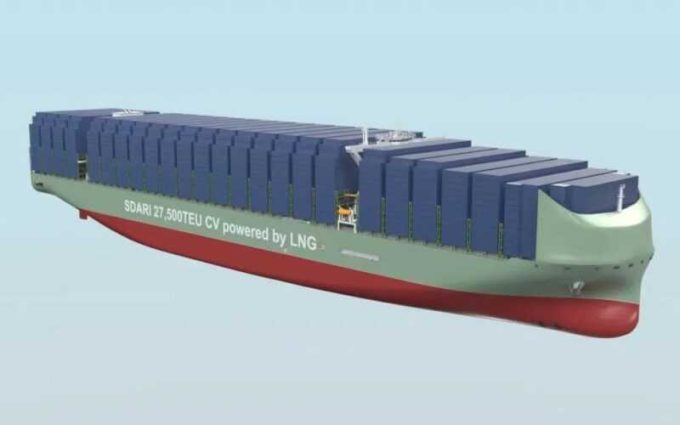Hapag-Lloyd culls China-Germany service amid tonnage supply concerns
Hapag-Lloyd is to withdraw its China-Germany express service (CGX) in February, as the German mainline ...
FDX: ABOUT USPS PRIVATISATIONFDX: CCO VIEWFDX: LOWER GUIDANCE FDX: DISRUPTING AIR FREIGHTFDX: FOCUS ON KEY VERTICALFDX: LTL OUTLOOKGXO: NEW LOW LINE: NEW LOW FDX: INDUSTRIAL WOESFDX: HEALTH CHECKFDX: TRADING UPDATEWMT: GREEN WOESFDX: FREIGHT BREAK-UPFDX: WAITING FOR THE SPINHON: BREAK-UP ALLUREDSV: BREACHING SUPPORTVW: BOLT-ON DEALAMZN: TOP PICK
FDX: ABOUT USPS PRIVATISATIONFDX: CCO VIEWFDX: LOWER GUIDANCE FDX: DISRUPTING AIR FREIGHTFDX: FOCUS ON KEY VERTICALFDX: LTL OUTLOOKGXO: NEW LOW LINE: NEW LOW FDX: INDUSTRIAL WOESFDX: HEALTH CHECKFDX: TRADING UPDATEWMT: GREEN WOESFDX: FREIGHT BREAK-UPFDX: WAITING FOR THE SPINHON: BREAK-UP ALLUREDSV: BREACHING SUPPORTVW: BOLT-ON DEALAMZN: TOP PICK

A massive Chinese ship design presages a new generation of 27,500teu giants hitting the market before the decade is out.
It is rare to find an available slot at one of the Far East’s largest shipyards at the moment, thanks to overwhelming demand for containerships and tankers, pushing delivery dates out to 2029 and beyond.
But China State Shipbuilding Corporation’s (CSSC) Shanghai Ship Research and Design Institute (SDARI) is stoking interest in increasing containership sizes still further, with a new dual-fuel LNG ship design dubbed ‘Green Sealion’ that will increase the number of slots by just over 3,000 compared with the current largest ship, the 24,346teu MSC Irene series.
The vessel was granted approval in principle by classification society DNV last week.
It will come as a surprise to naval architects that design of the 27,500teu behemoth appears similar to that of MSC Irene, with 25 stacks of containers spanning the length of the vessel, a split-block layout, with an engine room some way down the vessel, and a bridge and accommodation block closer to the bow, a method used on current designs to maximise the number of containers which can be loaded without obstructing the view from the bridge.
Although scant detail is available on its actual dimensions, inference from the SDARI rendering is that the vessel would achieve the extra capacity by stacking containers higher than would be possible on the world’s current largest generation of ships, using a specially adapted bridge.
Green Sealion also features a large windshield protecting the front row of containers from spray and assisting with aerodynamics.
Aerodynamics took on a new focus at the SMM show last week, with the topic discussed within ship design circles as though it had just been invented. Speaking to a panel last week, Arne Maibohm, Hapag-Lloyd’s director of decarbonisation, explained that his company had been looking into “…as funny as it is, aerodynamics for ships. We see the Cap San Diego [museum ship] has a beautiful shape — whereas the new container ships or car carriers are basically shaped like floating parking lots.”
The news follows that of the KUN24AP, another CSSC design for a 24,000teu container ship powered by a molten salt nuclear reactor, which, though similar in capacity, would dwarf today’s boxships in a different sense – sailing much faster, it would transport much more cargo overall.
Comment on this article